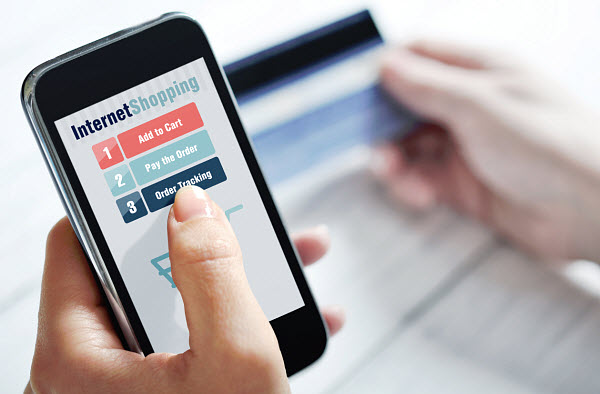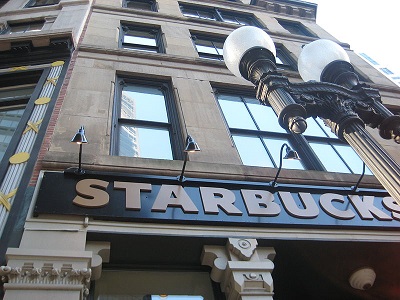Consumers and merchants are beginning to embrace mobile commerce more willingly
Mobile payments in the U.S. are expected to reach new heights in the near future, according to BI Intelligence. Consumers throughout the country have become heavily reliant on their smartphones and tablets and are using these devices to shop online more frequently. As physical stores become more accommodating of mobile consumers, these people are also beginning to use their devices to pay for products from these stores, rather than use traditional forms of currency.
Mobile transaction volume to grow by a CAGR of 153% from 2013 to 2018
BI Intelligence estimates that mobile payment volume will grow at a compound annual growth rate of a staggering 153% from 2013 to 2018. By the end of 2018, total mobile sales are expected to reach $190 billion. The majority of this growth is not expected to be seen until 2016, however, when a favorable balance between consumer acceptance and merchant adoption is expected to be established. Currently, consumers are willing to spend money from their mobile devices, but few merchants have yet to embrace the concept of mobile commerce.
Consumers show favor for the convenience of mobile commerce
 Mobile commerce has been gaining popularity among consumers for some time now. The concept is quite attractive because of its convenient nature, providing consumers a way to shop for and purchase products that they are interested in from a mobile device, no matter where they are in the world. Consumers can often choose where they would like to have the products they have purchase online delivered, or they can opt to pick up these products at a physical store.
Mobile commerce has been gaining popularity among consumers for some time now. The concept is quite attractive because of its convenient nature, providing consumers a way to shop for and purchase products that they are interested in from a mobile device, no matter where they are in the world. Consumers can often choose where they would like to have the products they have purchase online delivered, or they can opt to pick up these products at a physical store.
Merchants may begin to find significant success in mobile commerce beginning in 2016
As consumers become more accepting of mobile commerce, so too are merchants. While many merchants have found it difficult to engage mobile consumers in an effective manner, those highlighting the convenience of mobile payments often find support among particular demographics. Merchants are expected to find more success in their mobile commerce endeavors beginning in 2016, when they begin embracing new, mobile-centric network technologies.
Starbucks is growing bolder with its mobile initiatives in order to better engage consumers
Starbucks is beginning to more aggressively promote its mobile payments application. The app can already be considered a resounding success for the company, but Starbucks is keen to see its use expand among its customers. The company is beginning to promote the app as the best way to avoid long lines at its local stores, giving customers a way to order and purchase products quickly from their mobile devices while also being rewarded for doing so.
Mobile commerce is quickly winning over consumers
Mobile commerce has won favor with consumers because of its convenient nature, but relatively few people are willing to embrace mobile payments fully. This is due to their security concerns and the fact that most mobile commerce platforms are exactly the same. The majority of mobile commerce applications currently available to consumers only facilitate mobile transactions, offering little else in the way of convenience or rewarding consumer loyalty. Starbucks has managed to find strong success with its app through a focus on consumer loyalty, noting that more than 8 million people are currently registered with My Starbucks Rewards.
Starbucks begins promoting mobile transactions in more of its stores located throughout the US
 Approximately 14% of all payments made at Starbucks store now come from the company’s mobile application. Starbucks suggests that its customers are becoming quite interested in mobile payments because of how easy and convenient its mobile application is. The company is beginning to rapidly increase the number of locations that accept mobile transactions in the hopes of further promoting its application as a viable tool for consumers.
Approximately 14% of all payments made at Starbucks store now come from the company’s mobile application. Starbucks suggests that its customers are becoming quite interested in mobile payments because of how easy and convenient its mobile application is. The company is beginning to rapidly increase the number of locations that accept mobile transactions in the hopes of further promoting its application as a viable tool for consumers.
Company has big plans for mobile commerce and plans to see success in this highly competitive market
Mobile commerce has become one of Starbucks’ most lucrative business sectors. Rumors suggest that the company was able to generate more than $1 billion in revenue just from mobile payments in 2013. The company is eager to continue capitalizing on the increasing mobility of its customers, offering them services that are designed to be convenient and mobile-centric in nature.
 Mobile commerce has been gaining popularity among consumers for some time now. The concept is quite attractive because of its convenient nature, providing consumers a way to shop for and purchase products that they are interested in from a mobile device, no matter where they are in the world. Consumers can often choose where they would like to have the products they have purchase online delivered, or they can opt to pick up these products at a physical store.
Mobile commerce has been gaining popularity among consumers for some time now. The concept is quite attractive because of its convenient nature, providing consumers a way to shop for and purchase products that they are interested in from a mobile device, no matter where they are in the world. Consumers can often choose where they would like to have the products they have purchase online delivered, or they can opt to pick up these products at a physical store.
 Approximately 14% of all payments made at Starbucks store now come from the company’s mobile application. Starbucks suggests that its customers are becoming quite interested in mobile payments because of how easy and convenient its mobile application is. The company is beginning to rapidly increase the number of locations that accept mobile transactions in the hopes of further promoting its application as a viable tool for consumers.
Approximately 14% of all payments made at Starbucks store now come from the company’s mobile application. Starbucks suggests that its customers are becoming quite interested in mobile payments because of how easy and convenient its mobile application is. The company is beginning to rapidly increase the number of locations that accept mobile transactions in the hopes of further promoting its application as a viable tool for consumers.